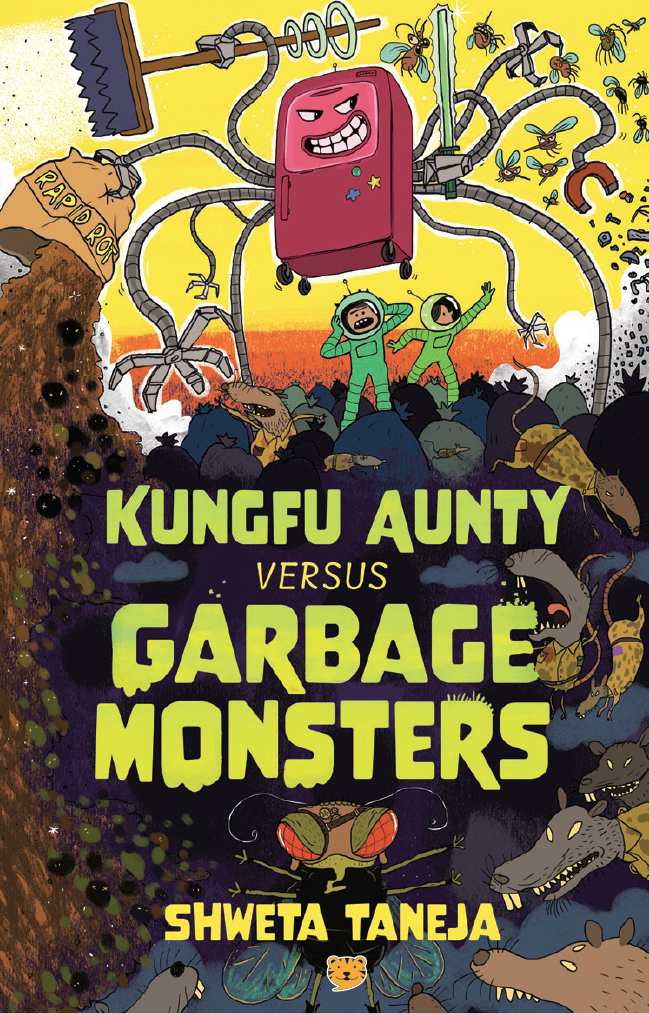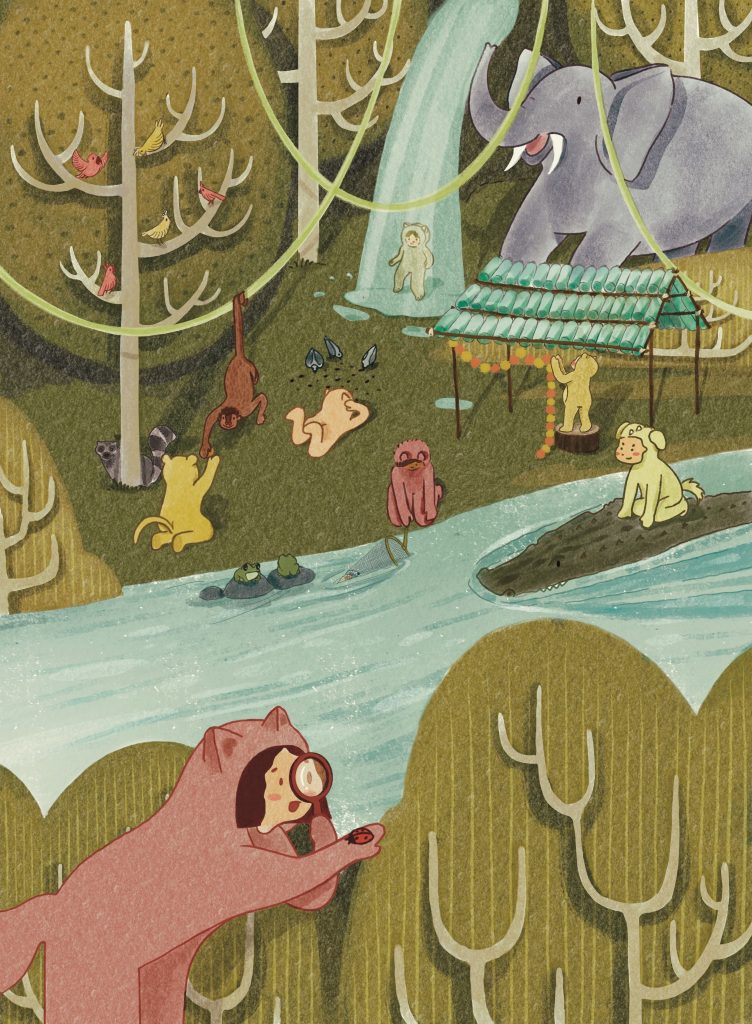Hi! My name is Preeti. I’m a melittologist, which means that I’m a scientist who studies bees. I study all sorts of things about bees, such as their diversity, environment, food, and their importance. I would like to introduce you to my friend, Robyn. She is an organic farmer from Australia. I first met Robyn at the Navdanya Biodiversity Farm in Dehradun, where I work.
Robyn discovered a swarm of honeybees (called Apis indica by scientists) in one of the rubbish bins on the farm. The bees seemed to have built their hive and resided in the bin for several months. She was thrilled by their presence and would occasionally check on them. One fine morning in June 2020, she noticed many dead bees scattered around the bin. The lid was raised more than usual, exposing the honeycomb inside. The bees were working hard to build new combs to replace the damaged areas of the hive. Robyn noticed that in these new combs, the cells were fresh, regular, and creamy white, and had not yet been filled with honey.
When Robyn informed me about the dead bees she had found. I eagerly went to investigate. It was the peak of summer, and finding dead drone (male) bees around beehives was a common sight. This is because flowers become challenging to find around this time. Hence, honeybee workers (females) drive all the drones out of the hive because they feed on the already scarce food reserves. That’s why I was surprised to discover that none of the dead bees around the bin were drones.
Instead, they were all female worker bees. Worker bees have a strong relationship with their hive. They attack any intruder by delivering a painful sting, which injects bee venom. The worker bees die afterwards because they lose their stomach along with the sting, which gets stuck in the intruder’s body. On inspecting the dead bees closely, I found no signs of the stings being lost. I looked around the bin for more evidence and found something intriguing—a scat! That is what scientists call the poop of carnivorous mammals. My wildlife biologist colleagues confirmed that the scat belonged to a mongoose.
Mongoose scat may be mistaken for the poop of other similar animals, such as civets and porcupines. What differentiates it from the others is the shape, size, and contents. Mongoose scat is as thick as your little finger and as long as the diameter of a 10-rupee coin, and usually contains body parts of insects or other small animals, as well as the occasional fruit seed. Thus, we concluded that the Indian grey mongoose (or Herpestes edwerdsii according to scientists), the only mongoose species found around the farm, was the culprit who had visited the beehive!
Insects are a common food resource for mongooses. Robyn and I initially suspected that the mongoose simply attacked the hive to feed on the bees. Yet, many questions remained unanswered. If the mongoose did, indeed, come for the bees, why did it leave hundreds of them uneaten? Why destroy the hive? Why were there no broken pieces of beehive scattered around the bin? We were curious to discover the answers to these questions.
We started by doing some research on the diet of mongooses. From books, scientific papers, and the internet, we learned that mongooses eat live animals such as birds, small rodents, insects, reptiles, as well as fruits. Beetles form a large part of their diet compared to other insects. Some studies showed that they ate bees too. Yet, there were no clear leads to any of our questions regarding the hive. We scratched our heads over it for days together until—eureka! A possible explanation struck me. The mongoose may have come to eat the honey, and in the process, it consumed parts of the hive. The worker bees would have responded with an attack. The Indian grey mongoose is famously known to survive venomous snake bites due to their thick and tough fur. The bees might have died from exhaustion, trying hard to sting the intruder.
And this was how Robyn and I solved the mystery of the dead bees! Yes, you may ask why scientists have not reported honey in the mongoose diet previously. It is probably because honey is not visible in the scat. In science, one answer often leads to another question. Now we were left wondering whether mongooses have a sweet tooth. Now, who amongst you are nature detectives would like to carry out this new investigation?
“Conclusion! Indian grey mongoose Herpestes edwerdsii had visited the beehive.”






